
2 steps to shake-off added sugar




Wednesday, November 22, 2017
According to the latest research from the American Diabetes Association, 30.3 million Americans had diabetes in 2015 and they estimate that 7.2 million of those cases are undiagnosed. Additionally, the ADA reports that another 1.5 million people are diagnosed with diabetes every year. November is national diabetes awareness month. We are wrapping up this month by bringing awareness of how people can prevent or manage diabetes the Well-Balanced way.
Let’s start by circling back to the Well-Balanced Plate, which is not only good for weight management and getting the vitamins and minerals you need – it can also help regulate your blood sugars. As you may already know, diabetes is a condition of having elevated blood sugars, which can often be attributed to eating a diet that is high in sugar or other simple carbohydrates (specifically for type 2 diabetes). There is also a genetic predisposition to have a higher risk of developing type 2 diabetes; however, it is often preventable with diet and lifestyle changes.
On the Well-Balanced Plate, we include complex carbohydrates, such as whole grains, in small portions. You can read more about the benefits of whole grains here. A complex carbohydrate has higher fiber content and will not raise blood sugars as quickly as simple carbs. For instance, you might find yourself feeling hungry soon after eating a meal with white rice versus eating oatmeal or other whole grains. Not only do we find carbohydrates in grains such as oats, quinoa, and whole wheat bread but we also find carbohydrates in fruits, vegetables – especially the starchy vegetables like potatoes and corn – and most dairy products. It is important to know what foods are affecting your blood sugars and how to eat them in balance. This is something we discuss with many of our clients – click here to learn more.
Additional benefits of eating well-balanced means you’re including not only complex carbs – but we also emphasize protein and healthy fat. Incorporating protein and healthy fat helps to slow the rate of how quickly food is turned into glucose (blood sugar) to be used for energy.
Last year, Karen* came to Well-Balanced Nutrition because her hemoglobin A1C, a marker of checking a person’s average blood sugars, was elevated at 6.4%. This is one percentage point away from being diagnosed with diabetes. Karen was very eager to learn how to prevent diabetes without going on any medications. During her initial assessment, we talked about her healthy habits, then she mentioned her love of Pepsi-Cola. After a few more visits, Karen incorporated some mindful eating techniques and implemented label reading to check the carbohydrate and sugar content of everything she bought. Karen reports it was easier than she expected to stop drinking Pepsi. She is pleased to still occasionally enjoy a glass of chocolate milk from Maple View Farms for days that she wants something extra special. At her follow-up doctor appointment last June, the doctor said, “Congratulations, whatever you’re doing is working. Keep it up.“
*Name changed to protect identity.
Here are a couple of examples of our favorite well-balanced meals:
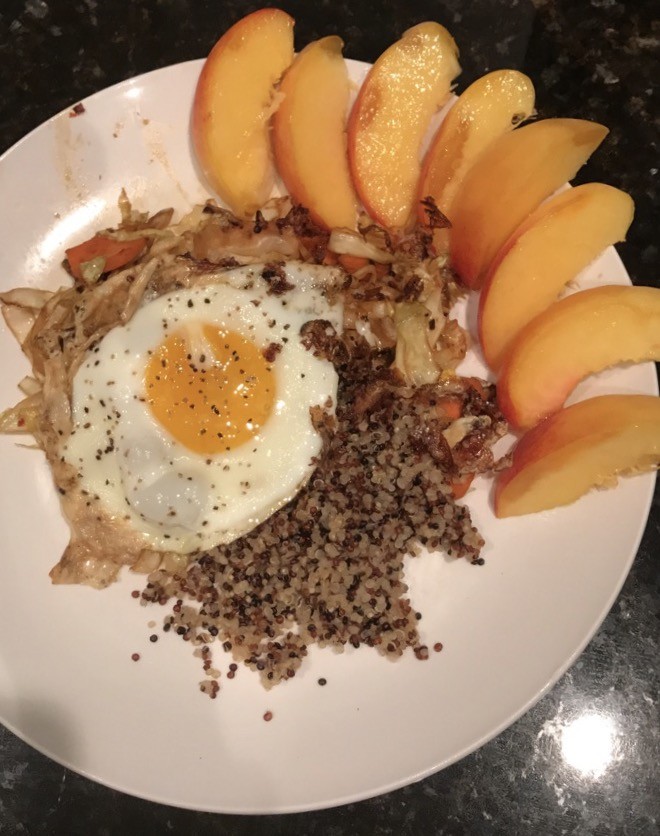
Sauteed cabbage and carrots w/ quinoa, fried egg & peach
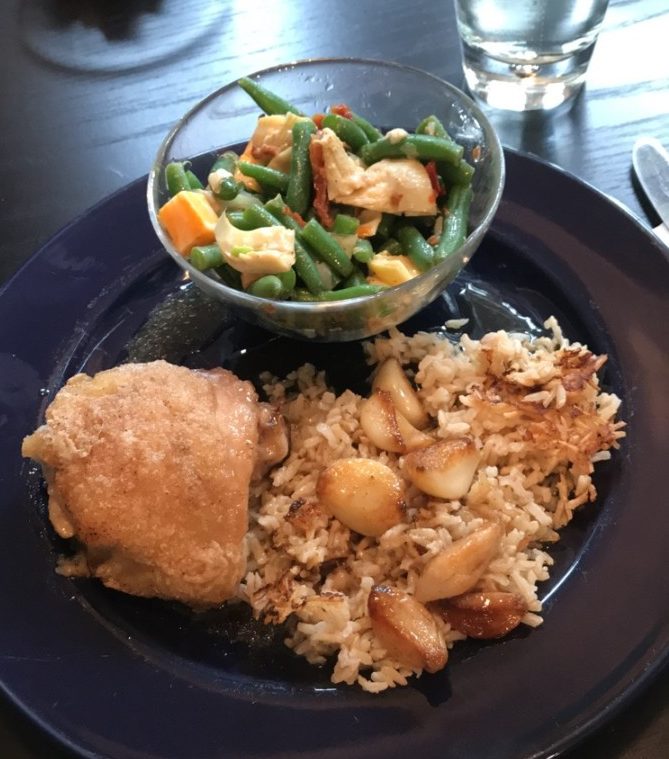
Garlic chicken legs w/ brown rice and artichoke green bean salad
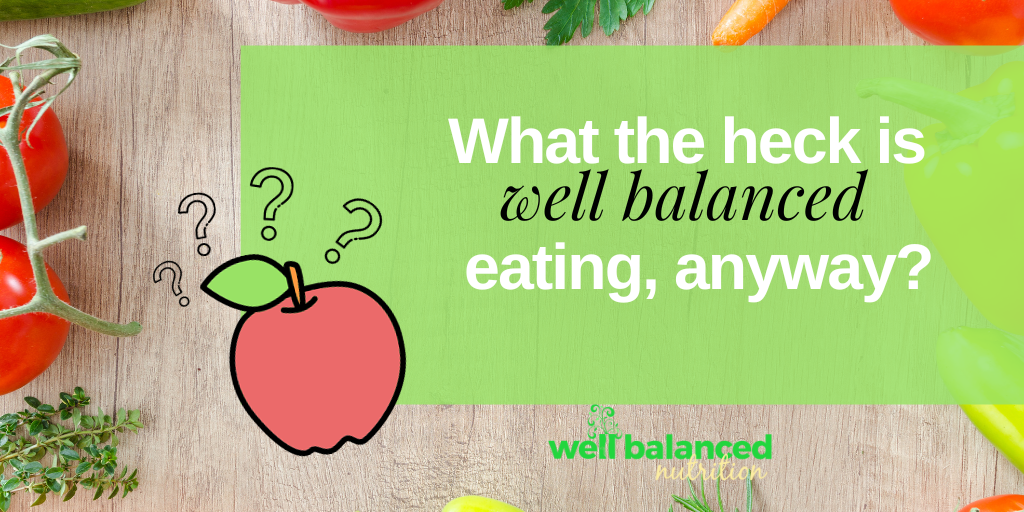
Kristen and I talk a lot about eating well-balanced, but unless you have sat down with us or heard the Well-Balanced Plate talk you may be wondering… what does that mean?
The Well Balanced Plate
After reading countless research articles, books such as The Blue Zone Solutions, and a combining over 20 years of professional nutrition experience, Kristen and I recognize the benefits of a mostly plant-based diet incorporating protein, complex carbohydrates, and healthy fat. Eating them in the proportions shown on the Well Balanced Plate helps you feel full and satisfied, not deprived and ridden with cravings. When we eat foods from nature in this way, we can start to trust and rely on our body and mind to remind us what, how much and when to eat.
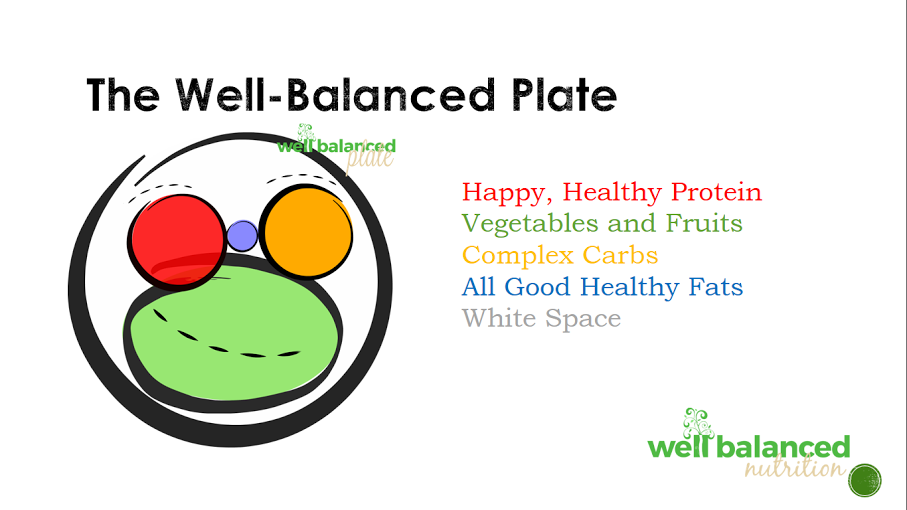
The Well-Balanced Plate was created to visually represent a balanced meal or snack.
Mostly fruits and vegetables
Five populations in the world have the highest concentration of centenarians, people living over 100-years, and they all have something in common: a plant-centric diet. You can read all about their lifestyles in the Blue Zones. Many people who’ve read the book assume you have to be a vegetarian to live a long, vibrant life. In actuality, four of the five communities eat animal protein on a regular basis; however, they make meat more of a side-dish rather than the main course.
You’ll notice that the largest section of the Well-Balanced plate is for vegetables and fruit, not meat or carbs. By filling half of your plate with non-starchy vegetables and fruit, you will not only fill up on fewer calories, but also (and most importantly) get the health benefits of vitamins, minerals, fiber, and phytochemicals.
Vary your Veggies
Kristen wrote more about the benefits of fruits and vegetables in an earlier post and encouraged eating a variety. America is a melting pot of ethnic cultures which means we have many food options at our fingertips. Eating healthfully doesn’t have to be boring. Change things up and try a new vegetable or a different way of cooking, such as implementing Meatless Monday or trying an ethnic dish.
It’s not perfect. It’s flexible and enjoyable.
Well-balanced eating is not perfect. First of all, there will always be celebrations, cookouts, holiday parties, etc. when healthy choices are limited, and in those cases, we make the best decisions at that moment. Secondly, food is enjoyable, and it’s okay to indulge when you decide it’s worth it. Ellyn Satter, an internationally recognized dietitian and feeding therapist, sums it up well when she says, “normal eating is being able to give some thought to your food selection, so you get nutritious food, but not being so wary and restrictive that you miss out on enjoyable food.”
It’s more mindful and less impulsive.
Mindful eating strategies can help us become normal eaters and avoid the point when cravings, emotional eating, and daily life can consistently lead to unhealthy choices that leave our bodies fed but undernourished. Lucy shared HALT, an acronym to explain why our poorest choices tend to happen when we are hungry, angry/frustrated, lonely or tired, and Kristen shared how gathering some DATA can help you cut back on sugar. Another mindful concept is what we call “20% white space“, where we purposefully give ourselves time to check in with our bodies to determine if we are still hungry.
It get’s easier with time
Every time you eat is an opportunity to practice being well-balanced. Eventually, you will no longer have to try so hard because you have practiced for so long.
It means ditching the diet and striving for self-care.
The media keeps reminding us that two out of three American adults are considered overweight or obese, and there’s this pressure to be thin like the women we see in magazines. This messaging, along with the fad diet industry, is creating a culture full of body shame and food guilt. That feels demoralizing.
Many people come to Well-balanced Nutrition with a goal to lose weight. We know that diets don’t really work. Instead of focusing solely on the food, we help people identify the behaviors and patterns that prevent them from reaching a healthy balance. We talk about making small behavior changes to create a compound effect which will result in more energy, confidence, and yes, typically a lower number on the scale. We use weight as a tool, but with the understanding that weight is only a small part of your health picture. Ultimately, we want our WBN tribe to eat well because it feels good and allows them to live a full life not just for that number on the scale.
A way of life
Well-Balanced Nutrition is more than a plate; it’s a way of life. If you have sat down with Kristen or Lucy, you know we talk about much more than what you eat. We ask about who buys and prepares the food, what your typical day looks like, how much sleep you get, your stress level and so on. We even take note of your personality, attitudes, and beliefs. We consider all these things when we work with you to create a well-balanced plan. Each of us comes to the table with a different story, but we all have a desire to be our best selves.
To sum it all up, well-balanced eating means ditching the diet mentality where foods are either good or bad, clean or dirty. Restriction, shame, and guilt should not be the norm. Instead, shift your focus to eating more natural foods and tuning into your body and mind. Eat mostly plants and do something every day that makes you feel good and can help you live your best life.
Ready to start eating well-balanced? “Lettuce” help! 😉
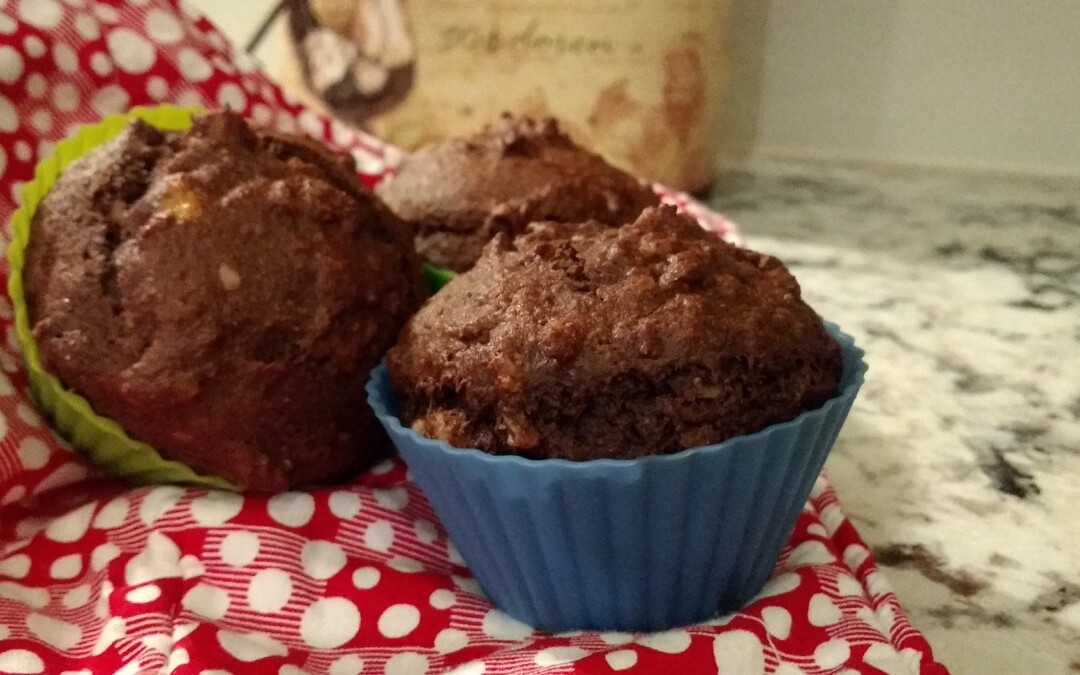
It’s rare that I meet someone who doesn’t have a sweet tooth. Some of us struggle more than others with sweet cravings. How do we choose to indulge our sweet tooth (or not to) in a healthy way? Here are four mindfulness strategies:
Oftentimes, we crave sweets because of some underlying thought or emotion that drives a desire for something comforting. When the craving hits, taking a mindful pause allows us to become aware of our emotions, senses, and actions. We may be frustrated, stressed, tired, or bored and looking to escape those uncomfortable feelings. Unfortunately, we all know those feelings won’t disappear by eating chocolate (although that would be awesome!). Yet our brain seems to think it will work every time. A little mindfulness and a full toolbox of ways to soothe yourself without food can go a long way when it comes to managing that sweet tooth.
Ask yourself, do I really want this, or is my primitive brain just craving it because it’s there, free, tempting, etc? If we always follow that primitive drive to indulge, we could end up far from our goals. Having a way to sort through a craving can help. I like to ask myself questions to gather more information. How bad do I really want this? Willt his craving pass pretty quickly? Is this craving for something special and unique? Does this help me meet my needs? Is it going to make me feel good or lousy? Is the experience going to be worth it? For instance, the candy from a jar at work… although delicious, probably not very special. I might devour it as I walk to the water jug without actually experiencing it. But a melt-in-your-mouth s’more when you are on a family camping trip or a decadent homemade pie you only get once a year around the holidays that you sit down to savor with people who mean the world to you… those are the kind of treats that I call worth it. Simply putting a little thought into your decision can help you decide to pass or go on a sweet treat.
When food is off-limits, it gains power. It’s always your choice to honor a craving or ride it out and let it pass. When you take a mindful pause and sort through it, you can then consciously ask yourself if you still want that food. Give yourself permission to say yes without any judgemental thoughts (like I’m being bad or I’m cheating). Once you do, ironically, it will be much easier to say no if you want to.
Cravings can come on for various reasons, but being too restrictive or eating bland food can definitely trigger more cravings. If you aren’t enjoying your food, maybe it’s time to look at how to put more joy and flavor onto your plate. This is different for everyone. Perhaps this means adding a bit of honey and cocoa powder into your morning smoothie, making a flavorful sauce to go on top of your meat and roasted veggies, or ending your meal with fruit or, dare I say, chocolate sometimes!
Incorporate some delicious AND nutritious treats in your routine for a more satisfying daily diet. Dietitians really have a knack for combining healthier ingredients like fruits and vegetables with their chocolate! So, in honor of #NationalNutritionMonth, here I highlight some tasty treats packed with healthy perks from real, quality food ingredients, including my own recipe for Chocolate Banana Nut Muffins.
Ellie Krieger’s Dark Chocolate Covered Banana Pops –
It’s fun for kids and a great way to treat yourself on a sunny day!

Sweet Potato Avocado Muffins by The Real Food Dietitians
“An ooey-gooey fudgy brownie bite filled with healthy fats and chocolaty goodness.”
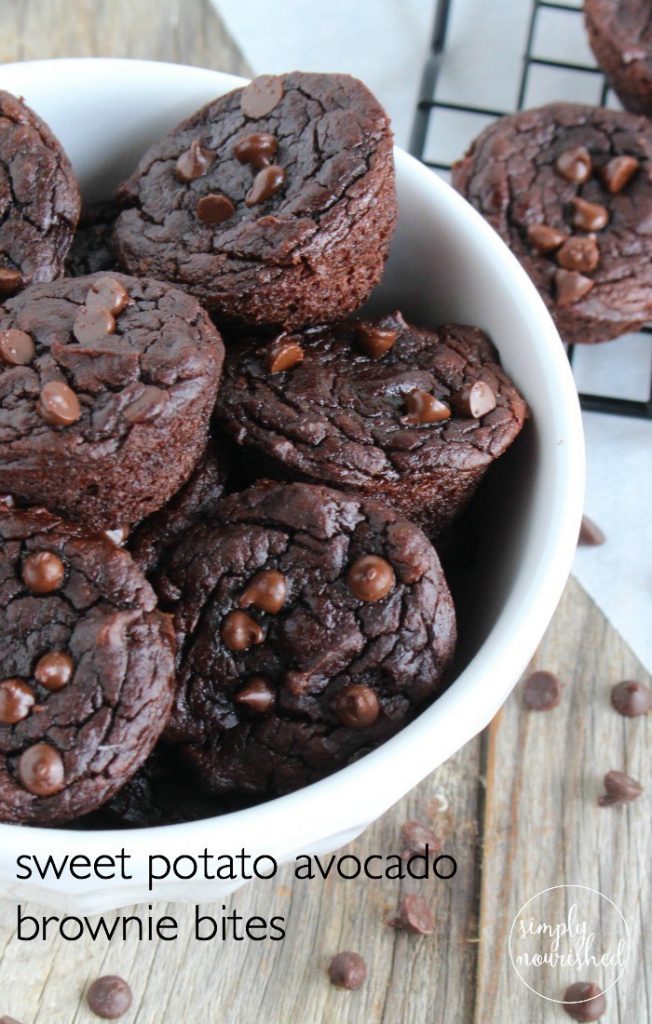
And here is my latest creation. I had bananas that were past their prime so I baked these chocolate muffins. They aren’t overly sweet so they made a good breakfast or snack. But if you wanted to dial up the sweetness a notch, just add your favorite chocolate chips and/or try adding some whipped cream cheese icing and voila! Your muffin is more like a cupcake!
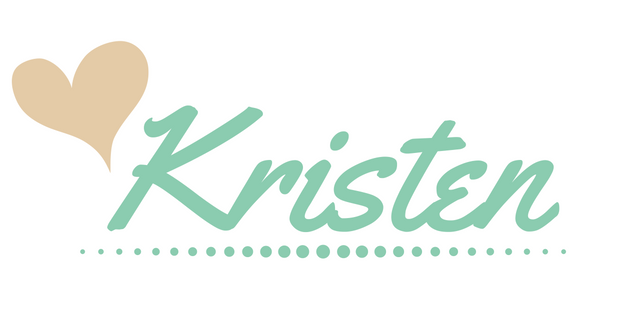

Monday, Mar 6, 2017
I love that moment when I tell people that Mondays are my favorite day of the week… If I could read minds, I’m guessing their thinking, “there’s something wrong with this girl,” or “she must be on something.”
As the story goes, in 2009, when I started Well-Balanced Nutrition (the first time) Monday’s quickly became my favorite day of the week because anything is possible. I see each Monday as a mini New Year and the opportunity to start fresh. Most people start the New Year feeling happy and optimistic. Why not start each week with the same enthusiasm?
When restarting Well-Balanced Nutrition, in May 2015, I knew it was time to rekindle that love of Monday to share an empowering, motivational, and health-focused message with our Well-Balanced nutrition tribe (that’s you!). I was blessed to have Kristen join the team early 2016 and together we strive to bring you uplifting and authentic wellness information.
But really, how do you make Monday’s “the best?”
1.Do something that makes you happy on Monday morning.
I designate every Monday as my admin time and make it very sacred time to get all the businessy stuff accomplished. Uninterrupted. Slightly odd that this is my happiness; however, I feel grateful to have the time to focus on what needs to get done and I feel so accomplished when I check those tasks off my to-do list!

2. Include positive brainwashing.
Also, I start each Monday morning with a mentor chat from my man, Darren Hardy, followed by an inspiring TED talk with breakfast. Have you discovered these yet? It’s amazing what you can learn in a 10-20 minutes inspiring video.
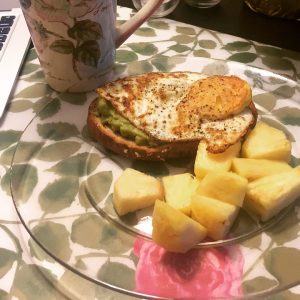
3. Eat something well-balanced and delicious.
Often, we get a little too liberal on the weekends and feel the need do penance to the diet gods on Monday for being “bad” over the weekend. This is bound to make Monday even less fun. Instead, I enjoy avocado toast w/ a fried egg and yummy fruit – nom nom nom!

4. Get moving.
My motto is a body in motion stays in motion, a body at rest stays at rest. Even if there’s not much time, include a 10-minute walk around the block before you head to work, a brisk walk during the first 15 minutes of your lunch break, or ending a long work day with a brief stretching session with doyogawithme.com.
Food for thought:
What makes Monday truly great? My state of mind. I choose to believe that Monday is the best and therefore I wake up with a positive attitude every Monday morning because anything is possible.
What are you gonna do to make your Monday the best? We’d love to see your comments below!
